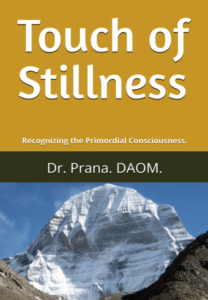Trika, CranioSacral Work and The Midline (Zhong Mai)
Trika and CranioSacral Work
The fundamental spectrum of human experience of individuality or duality and nondual-oneness or interconnected wholeness has been explored for millennia by spiritual traditions and by healing practices.
There is a remarkable coherence between a 5th century Indian tradition of Trika, and 19th century practice of osteopathy in Cranial Field or Craniosacral Work (CSW). Despite their vastly different origins, both offer a strikingly similar map of consciousness, guiding us from the perceived separation of daily life to the profound unity of our deepest being. For healers and seekers alike, understanding this shared narrative can unlock new dimensions of insight and transformation. This synthesis draws on the wisdom of masters like Abhinavagupta, Dr. Sutherland and Dr. Upledger, grounding the parallels between Trika and CSW in the rich symbolism of their traditions.
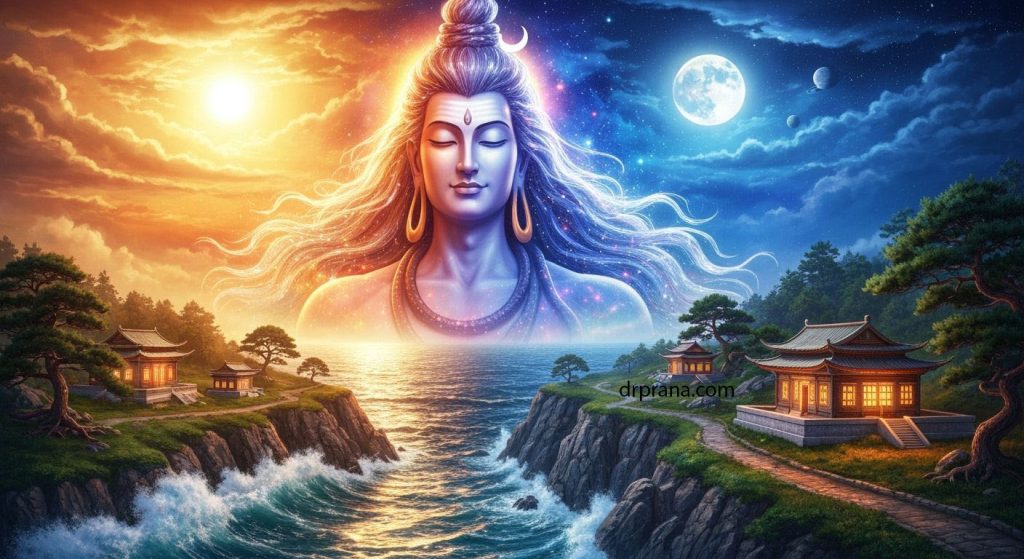
The Three Levels of Consciousness Field
The Outermost Level: Duality
In Trika, the outermost level is “apara”, representing the gross, manifest reality where the individual perceives themselves as separate from the universe. This state is marked by duality, akin to a wave feeling distinct from the ocean. Abhinavagupta, describes this in “Tantraloka”:
In the “apara” level, the individual is bound by maya (phenomenal experience of continual change), perceiving the world as other, distinct from the self.
This reflects the ordinary state of consciousness, where awareness is “I” oriented. Here, awareness is deeply engrossed in the objective, manifest world, leading to a limited sense of who we are blinding us to our inherent bliss and fullness. Yet, it’s crucial to understand that this duality is merely an appearance, not the ultimate reality. In Trika, all forms are understood as the appearance of duality, not the reality of duality. We get so caught up in it that we don’t see its source.
In CSW the Cranial Rhythmic Impulse (CRI) is the fastest and most state, associated with the physical body and the experience of separation. In our everyday lives, we primarily experience ourselves as distinct individuals. We have our own thoughts, feelings, bodies, and personal histories. This is the realm of duality, where “I” is separate from “you,” and the world appears as a collection of discrete objects.
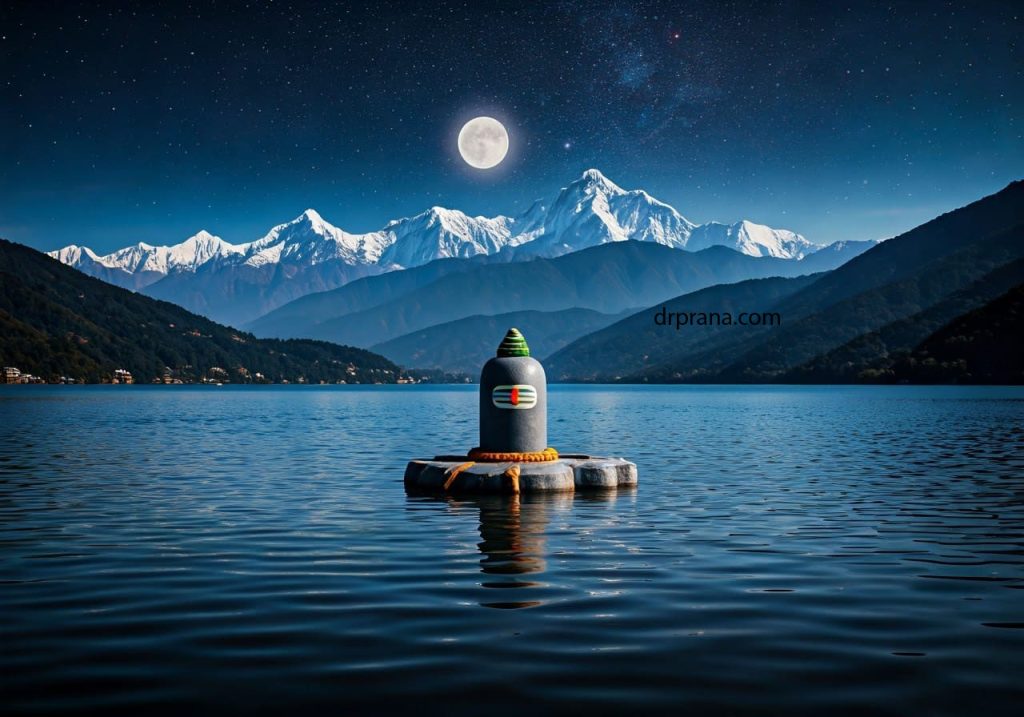
The Middle Level: Dual-Nondual
Between the nondual unitive consciousness and the stark experience of individual separation lies a dynamic, fertile ground where deep healing and transformation can initate. This is the realm where we begin to sense both our dualistic individuality and nondual oneness.
In Trika this is Para-apara, the middle level state where duality and nonduality coexist. Here, the individual begins to experience their unity with the whole without losing their sense of self. Abhinavagupta elucidates this in “Parātrīśikā Vivaraṇa”: “In ‘para-apara’, the practitioner realizes the world as an extension of their own being, a dance of unity and diversity.”
This state is often associated with the lucid dream state, where awareness is the embodied individual and the other or the cosmos at the same time.
It is an inward state, i.e. awareness moves inward towards the inner core or heart of being. As Balajinnātha Paṇḍita explains, “The heart of a person, shedding of its attitude of indifference while listening to the sweet sounds of a song or while feeling the delightful touch of something like sandalpaste, immediately starts a blissful vibration.” This “inner vibration” is crucial for experiencing “Self-bliss” and dissolving or loosening the sense of separation.
In Craniosacral therapy, the “midtide” refers to dual-nondual state where the practitioner can access the patient’s inherent health. John Upledger, describes this as: “The midtide is where the individual and the universal are in dialogue, facilitating deep healing through the interplay of personal and transpersonal forces.”
At this level, the one engages with both the individuality and their connection to the whole field of consciousness. Here one begins to perceive “deeper patterns and shapes at play” within.
The language of this dual-nondual state is often described as “twilight language” (Sandhabhasha) – a heuristic, poetic, or symbolic form of communication that transcends literal meaning. “Twilight language”, means that ‘the ideas may be explained either by the light of the day or by the darkness of the night'”. It’s a clothed language in which the highest truths are hidden in the form of the lowest, the most sacred in the form of the most ordinary. This poetic language is essential because the experiences of this realm are not purely dualistic nor entirely non-dual; they are a blend, requiring a nuanced, evocative expression. For example,
Dr. Upledger illustrates this by saying, “The tissue unwinds like a flower opening, revealing the story held within.” Or Dr. Sutherland describes, the healing power or transformative potency of tide as “Liquid Light”.
Thus, both traditions recognize that at this level, language transcends its dualistic limitations, becoming a bridge to deeper truths. In healing practice the relationship between dual and non-dual, known as the “Relational Field,” becomes paramount in this state. The embodied experience, and attunement to stillness of nondual consciousness are the key aspects in creating a Relational Field that generates a deep sense of safety and capacity to heal from within.
The core principle here is “doing not doing,” which means allowing the nondual consciousness to express itself at deeper and deeper levels rather than imposing change. This deep listening and attunement facilitate the one’s innate capacity for self-healing.
The Deep Ocean: Pure Unity – Para
Beyond the shifting tides of individual and relational experience lies the ultimate unitive consciousness: a state of pure, nondual consciousness, boundless fullness and indescribable.
In Trika, this is Para, the Supreme, Pure Non-Dual Consciousness. Abhinavagupta, states, “Supreme state of consciousness is manifest here in every circumstance of daily life because it is everywhere full and complete. Consciousness is said to be the cause of all things because it is everywhere emergent as each manifest entity”.
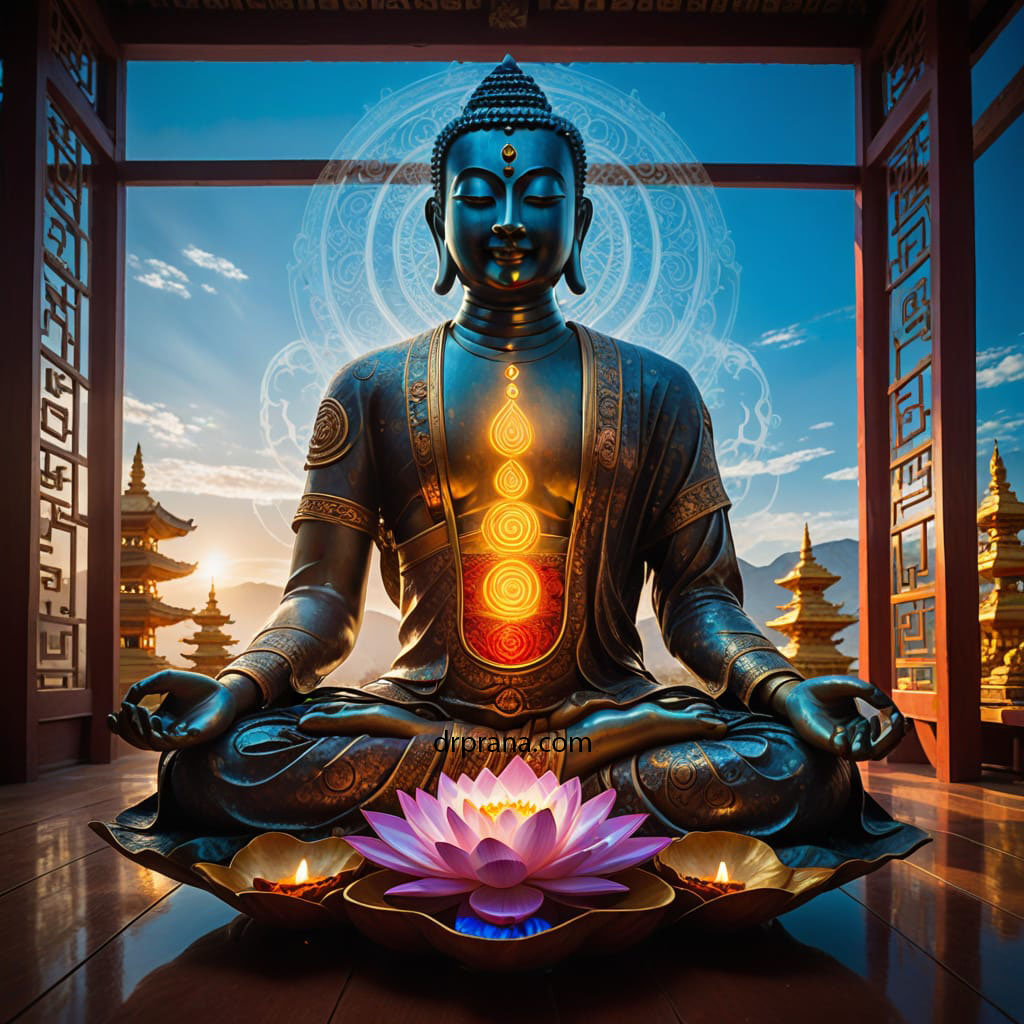
This Para is to be directly experienced not understood or described by language. Abhinavagupta notes, “The Supreme State of Being is neither positive nor negative, neither both as it is indescribable. It is that state which words fail to recount, though it lies within the range of force and yet remains far from use of that force”. Ram Dass echoes this sentiment: “There is only one of us. One consciousness manifesting into different forms”. This is the ground of all being, the source from which all “waves” arise and into which they ultimately dissolve.
In CSW, this corresponds to the Long Tide. The Long Tide is the deepest level, perceived as fundamental ordering matrix of a human being representing the deepest blueprint of whole being. Dr. Sutherland, believed that the deepest healing came from the Stillness of the Long Tide. ‘It is the Stillness of the Tide, not the stormy waves that bounce upon the shore, that has the potency, the power.” This “Stillness” is not an absence of activity, but a state of profound rest and reorganization, allowing the central nervous system to re-pattern and integrate at its most fundamental level.
The Coherent Map:
The convergence between Trika and CSW offers a an integrativ map of consciousness. It reveals that the ancient wisdom of non-dual tradition and the embodied practice of subtle touch are speaking the same language, albeit through different dialects.
The map delineating three levels of consciousness that reflect varying degrees of duality and nonduality. These levels—ranging from duality to pure nonduality—offer a framework for understanding the human experience and the path to healing and spiritual realization. In both traditions, the middle level is particularly significant for its role in facilitating deep healing, expressed through symbolic or poetic language. The embodied dual-nondual space allows for transformation while honoring the human experience, making it central to both spiritual and healing journeys.
The #midline. #ZhongMai. #MadhayaNadi. #Avadhuti. #Sushmana.
The Midline as a central core in Craniosacral Work, Trika, and Dragon Gate Daoist practices.

The primal midline is referred by many names in different healing traditions, Sushmana in Yoga, Avadhuti in Siddha, Zhong Mai in Daoism. All healing work is directly or indirectly linked to primal midline. The primal midline with its toroid shaped subtle biofield manifests as a universal phenomenon guiding development of living being throughout life. The midline or central channel is a unifying principle across craniosacral work (CSW), Trika , and Dragon Gate Daoism, serving as a foundational axis for physical, subtle, and spiritual work.
When our awareness is centered in primal midline, we feel the bliss of wholeness in the present moment. The midline serves gateless gate that allows awareness to move from duality to non-duality. In craniosacral work, it organizes whole being; in Trika, it is the path to nondual awareness; in Dragon Gate Daoism, it unites Practitioners with the Tao. This shared narrative underscores the midline’s role as a universal symbol of core practice of direct realization.
The Midline in CSW and polarity therapy
In craniosacral therapy, the primal midline is a subtle, organizing field that structures the body’s form and function. This midline is sensed as an uprising force along the vertebral bodies and cranial base, extending beyond the physical to the subtle body and spiritual. Practitioners work with this midline to release restrictions, restoring the body’s inherent health and vitality.
In the embryo, at day fourteen, the primitive streak and then the notochord form along the primal midline. The path of the notochord is through the centers of the vertebral bodies and discs, and remnants of the notochord have been said to remain in the centers of the intervertebral discs. In the early 20th century Dr. Sutherland, an osteopath, discovered bones of the skull connect to the sacrum along the primal midline. He called that the core link. The core link or midline the foundation of CSW.
Dr. Randolph Stone, the founder of Polarity Therapy, emphasized its centrality, stating in Polarity Therapy (1986), “All healing must include awareness of the midline, which carries a neuter essence at its core, balancing the positive and negative poles of the body.”
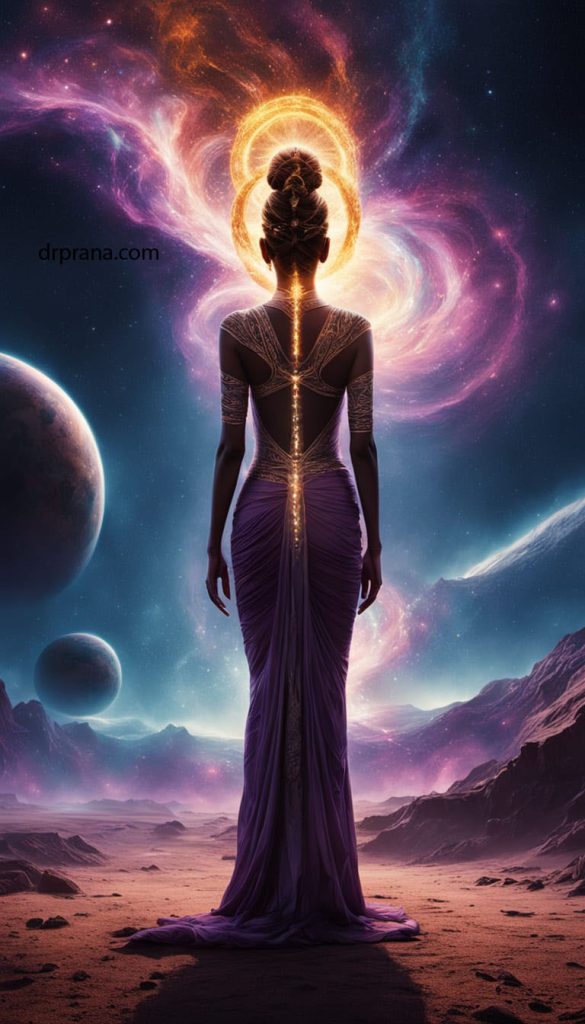
The Midline in Trika
In the Trika tradition, the midline is known as Sushumna, a central nadi (subtle central channel) within the subtle body. Originating from the kandasthana — a bulb-like structure at the base of the spine — Sushumna extends to the sahasrara (crown chakra). Abhinavagupta, a 10th-century master, describes its significance in Tantraloka: “When Sushumna is awakened, the limited self dissolves into the universal consciousness, revealing the bliss of nonduality.” The kandasthana is the origin of the three primary nadis (Ida, Pingala, and Sushumna), and the ascent of Kundalini through Sushumna is central to spiritual awakening.
Abhinavagupta further states in Parātrīśikā Vivaraṇa, “In Sushumna, the rift between self and other vanishes, revealing the unity of consciousness.”
When awareness settles on this midline, the ordinary mind, characterized by dualistic thought, ceases, leading to experiences of pure joy, love, and unity with all beings, as articulated in texts like Vijnana Bhairava Tantra.
In the middle, is the middle channel, straight like a lotus stalk;
meditating within its emptiness reveals all of the divinity. ~VigyanBhairav Tantra
मध्यनाडी मध्यसंस्था बिससूत्राभरूपया। ध्यातान्तर्व्योमया देव्या तया देवः प्रकाशते । । ३५ । ।
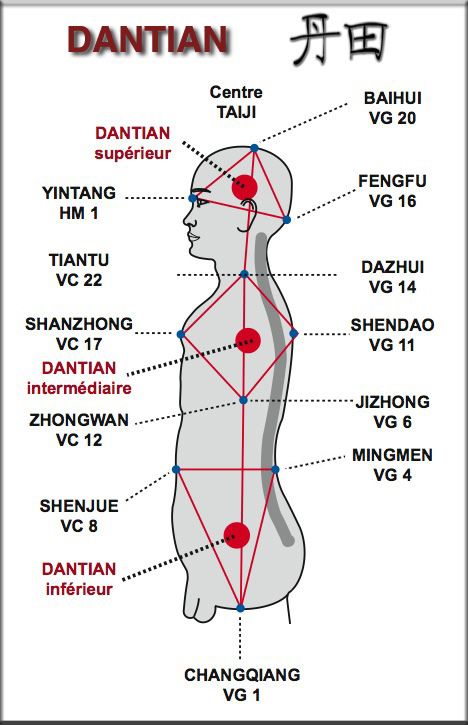
The Midline in Dragon Gate Daoism
Dragon Gate Daoism, a lineage within the Quanzhen School of Taoism, emphasizes the central channel through practices like the Microcosmic Orbit, where qi (life force) circulates along Du Mai (Governing Vessel, along the spine) and Ren Mai (Conception Vessel, along the front midline). These vessels connect the lower dantian (below the navel) to the upper dantian (brain), forming the body’s energetic midline. Wang Chongyang, the 12th-century founder of Quanzhen, taught, “The true yang is in the back, the true yin is in the front; when these two meet, the great medicine is complete” (Cultivation Poems). This practice harmonizes yin and yang, fostering physical vitality, mental clarity, and spiritual alignment with the Tao. Wang Changyue, a 17th-century Dragon Gate master, wrote in Longmen Xinfa (Core Teachings of Dragon Gate), “When the mind is still, the Tao is clear,” highlighting how focusing on the midline quiets the discursive mind, revealing harmony and interconnectedness.
The Microcosmic Orbit clears obstructions in the central channel (Zhong Mai), harmonizing qi and aligning with the Tao. This practice, as described in Qingjing Jing (Classic of Clarity and Stillness), fosters a state where “the heart-mind is pure, and the Tao manifests.”
May all beings be happy!

